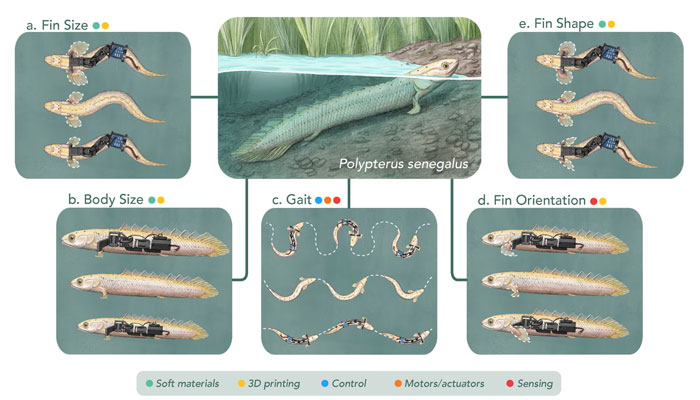Scientists revive extinct animals via robots to uncover evolutionary secrets
Researchers hope to finally uncover answers to million-year-old questions in a day with the help of robots
October 25, 2024

A team of researchers in the United Kingdom (UK( has dived into the realm of 'paleo-inspired' robotics to uncover the evolutionary secrets of species that have long been extinct.
The team, led by Dr Michael Ishida from Cambridge University, aim to stimulate millions of years of evolution within just a day by animating the robotic models of extinct animals.
"With a couple lines of code or a new 3D-printed leg we can simulate those millions of years of evolution in a single day of engineering effort," The Guardian quoted Ishida as saying.
The team focused on re-creating the movements of fossilised fish ancestors as a start and is currently centered on mudskippers, unique fish that adapted to life on land.

According to the researchers, robots that mimic the anatomy and movements of mudskippers would help them understand the evolutionary pressures that prompted these animals to come out of water.
Although engineers have traditionally built robots to mimic living animals, this study focuses on reconstructing entire ancient species, the researchers noted in the journal Science Robotics.
With the help of these robots, which operate in real environments instead of computer simulations and animations, would enable researchers to better analyse the animals' movement, WION reported.
The team hopes to finally uncover the answers to questions like how vertebrates moved from water to land, and how some dinosaurs developed the ability to fly, creating the ancestors of birds.
"These robots can help us test hypotheses about the history of life," Prof Steve Brusatte at the University of Edinburgh said.
"It would be mesmerising to build a robot to, say, understand how giant dinosaurs walked and moved. But what is especially exciting to me is the potential of using robots to study major evolutionary transitions," said Brusatte, who is not part of the project.









